 Olivia Turner
Olivia Turner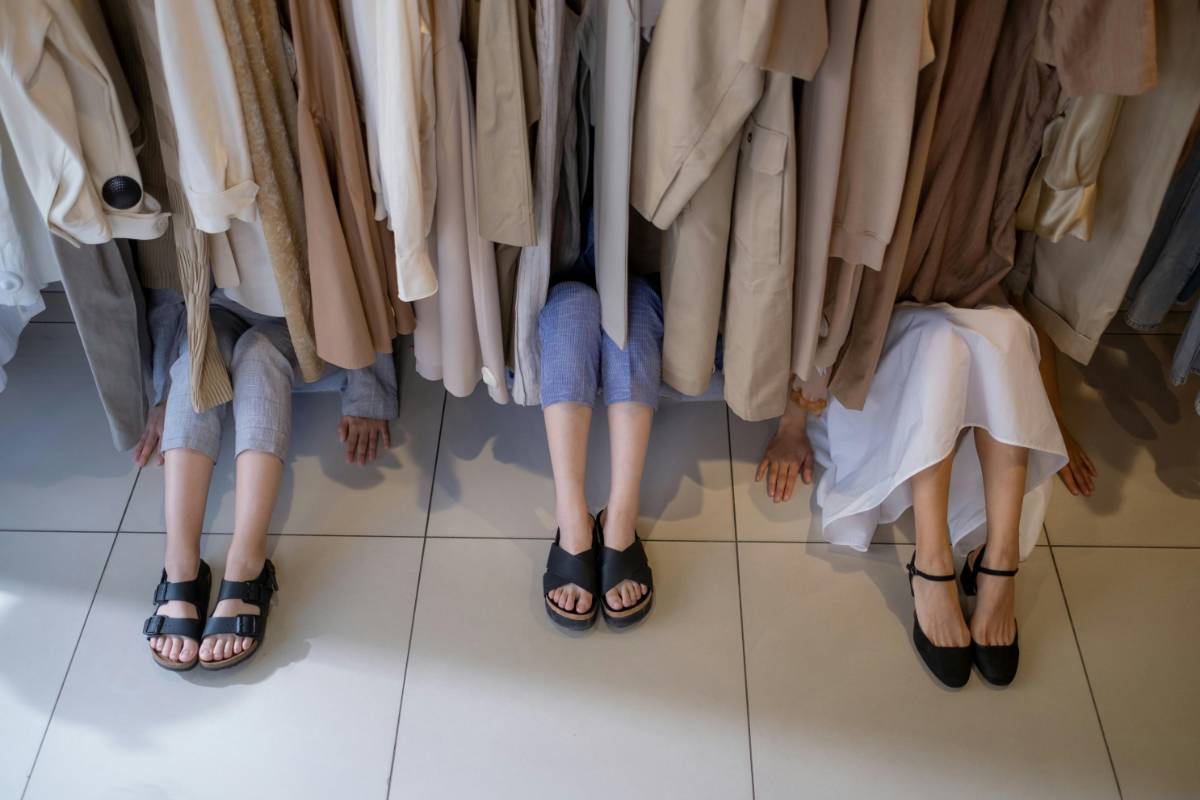
Boutique
The Return of Personal Shoppers in Exclusive Boutiques
In a retail world driven by algorithms and automation, the personal shopper is making a refined comeback—especially in high-end boutiques. These style professionals offer curated guidance, human connection, and insider access, bringing back the elegance of tailored shopping experiences.***1. A Human Touch in a Digital AgeWhile AI tools and virtual assistants are useful, nothing replaces the nuance and intuition of a personal shopper. Boutique clients crave someone who understands not just their measurements—but their moods, aspirations, and evolving style narratives.***2. Deep Brand KnowledgePersonal shoppers are often brand insiders who know every piece of the collection—its fit, fabric, and story. This expertise allows them to guide clients through seasonal lines with confidence, ensuring each choice aligns with the shopper’s identity and needs.***3. Time-Saving LuxuryFor many high-end clients, time is the ultimate luxury. Personal shoppers pre-select items based on preferences, minimizing browsing and maximizing satisfaction. They create capsule wardrobes, prep outfits for events, and manage wardrobe transitions with precision.***4. Elevated In-Boutique ExperiencesExclusive boutiques now offer VIP styling lounges, private fitting rooms, and personalized refreshments. The personal shopper becomes both a stylist and a host—curating not just clothes but an environment of ease, elegance, and exclusivity.***5. Relationship-Driven ServiceUnlike one-off online purchases, personal shopping is built on long-term relationships. These professionals remember past purchases, lifestyle updates, and evolving tastes—building trust that transforms clients into loyal brand ambassadors.***6. Access to Limited and Pre-Launch CollectionsPersonal shoppers often provide first access to limited-edition pieces, exclusive previews, or even made-to-order designs. This level of access enhances the sense of rarity and prestige associated with boutique shopping.***7. Bespoke Styling for Unique OccasionsWhether it’s a destination wedding, high-profile event, or red-carpet appearance, personal shoppers excel in occasion-based curation. They blend fashion expertise with personal insight to create looks that are both appropriate and unforgettable.***8. Confidence and Clarity in Every PurchaseWith a personal shopper’s support, clients make fewer impulse buys and more strategic additions to their wardrobe. This thoughtful approach enhances confidence, reduces returns, and supports a more sustainable consumption mindset.***9. Style Education and EmpowermentToday’s personal shoppers also act as mentors—educating clients on fabric care, silhouette harmony, and seasonal trends. They empower customers to understand their own style, making boutique visits both luxurious and enlightening.***10. A Revival Rooted in IntimacyAs luxury returns to its roots—intimacy, craftsmanship, and personal attention—the role of the personal shopper is more relevant than ever. They are not just facilitators of fashion but custodians of experience, connection, and refined taste.***ConclusionThe return of personal shoppers marks a turning point in boutique culture. It’s a celebration of personalized service in an impersonal age—a reminder that true luxury lies not just in what we buy, but in how we’re guided to find it.
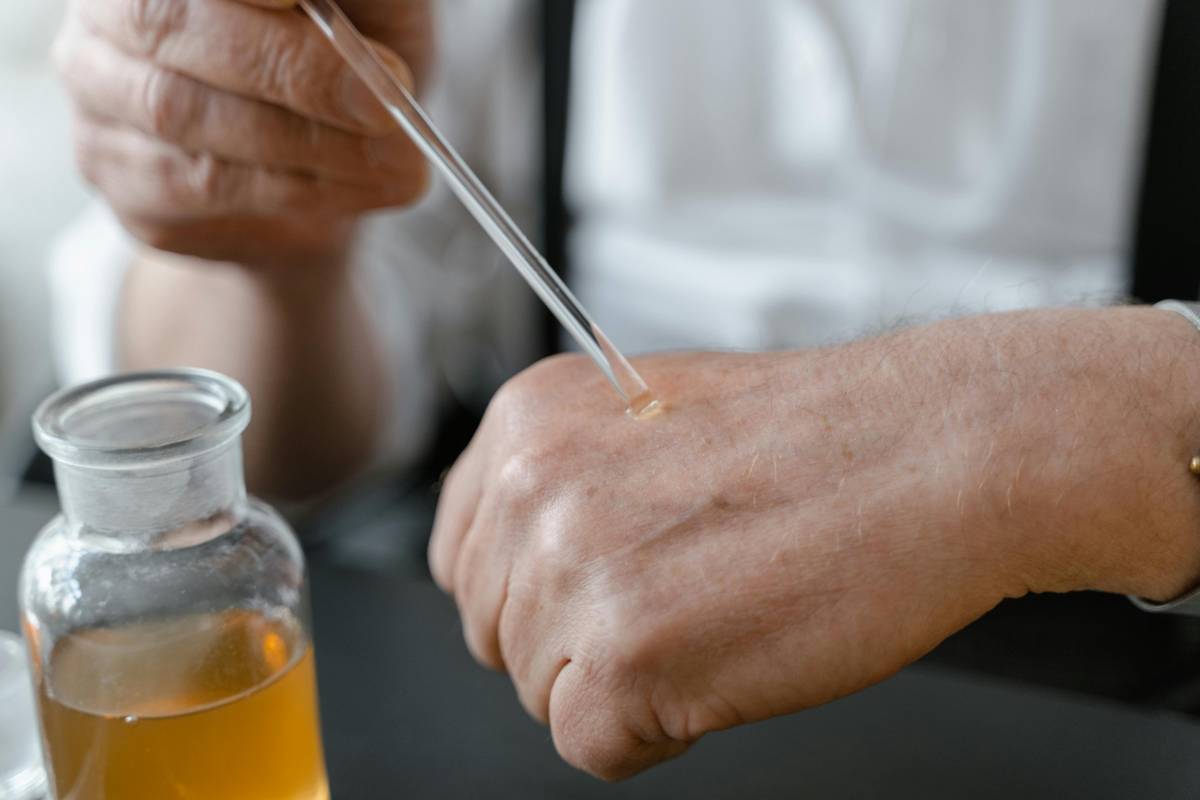
Boutique
From Fashion to Fragrance: Must-Visit Boutique Experiences in 2025
Boutiques have evolved far beyond simple retail spaces. In 2025, they represent immersive experiences—where fashion meets fragrance, and shopping becomes a journey. These spaces offer curated environments that blend art, design, and personalization, appealing to luxury lovers who crave more than just a transaction.***1. The Rise of Concept Boutiques2025’s boutique scene is all about storytelling. Brands like Gucci, Balenciaga, and Loewe are launching concept spaces where every element—from lighting to layout—expresses a unique narrative. Shoppers are no longer just buyers; they’re guests inside a living brand universe.***2. Fragrance Bars and Bespoke PerfumesNiche fragrance boutiques have become must-visits. Maison Francis Kurkdjian, Le Labo, and Diptyque now offer custom scent-making sessions. Visitors can blend ingredients with expert perfumers, creating personalized scents that reflect mood, personality, and even astrology.***3. Multi-Sensory Fashion RoomsFlagship boutiques are now designed to stimulate all five senses. Think: curated soundscapes, scent diffusers, and interactive digital walls. Burberry’s London boutique features rainfall simulation with trench coat displays, while Jacquemus in Paris offers nature-inspired shopping pods.***4. Tech-Infused Styling LoungesAI and AR are transforming boutique fashion. Stores like Farfetch and Neiman Marcus are introducing virtual try-ons, smart mirrors, and personalized fashion advice powered by machine learning. Customers can experiment with styles in real-time before even touching a hanger.***5. Designer-Led Pop-UpsSeasonal pop-up boutiques are giving local flair to global luxury. Brands like Dior and Louis Vuitton are setting up ephemeral stores in exotic locations—from coastal towns in Greece to ski resorts in Japan. These pop-ups offer exclusive collections and décor themed to the locale.***6. Fragrance Meets FashionChanel and Hermès are bridging their fashion and fragrance lines with hybrid boutiques. These spaces integrate clothing displays with scent-testing zones. Each garment is paired with a recommended scent, enhancing the emotional dimension of both style and smell.***7. Sustainable & Slow Luxury Boutiques2025 consumers want meaningful purchases. Boutiques focused on sustainable luxury—like Stella McCartney, Gabriela Hearst, and The Row—are emphasizing craftsmanship, traceability, and longevity. In-store ateliers even allow customers to watch artisans at work.***8. Café-Couture Hybrid SpacesThe fashion café trend continues. Boutiques like Ralph’s Coffee by Ralph Lauren and Café Dior blend retail with lifestyle. Guests can enjoy a curated drink menu while browsing limited-edition collections in ambient, stylish settings that encourage lingering.***9. Fragrance Art InstallationsPerfume boutiques are tapping into fine art. Brands like Byredo and Serge Lutens are curating fragrance-inspired installations—blending scent with sculpture, video, and performance art. These sensory exhibits captivate both collectors and casual shoppers.***10. Cultural Programming & VIP AccessBoutiques now double as cultural hubs. Brands host book launches, panel discussions, private trunk shows, and fragrance workshops. Chanel’s Rue Cambon boutique features an upstairs salon where VIPs engage in private fashion consultations and cocktail evenings.***11. The Future of Boutique TravelLuxury tourism in 2025 often includes boutique-hopping. High-end travel agencies now offer fashion-focused itineraries—from Tokyo’s hidden designer alleys to Marrakech’s artisanal fragrance stalls. For luxury seekers, every destination is a chance to discover curated, local style.***ConclusionIn 2025, the boutique experience is no longer just about shopping—it’s about immersion, storytelling, and personalization. Whether you’re drawn to avant-garde fashion displays, bespoke fragrance labs, or sustainability-driven design, boutique spaces are redefining luxury for the modern age—one sense at a time.
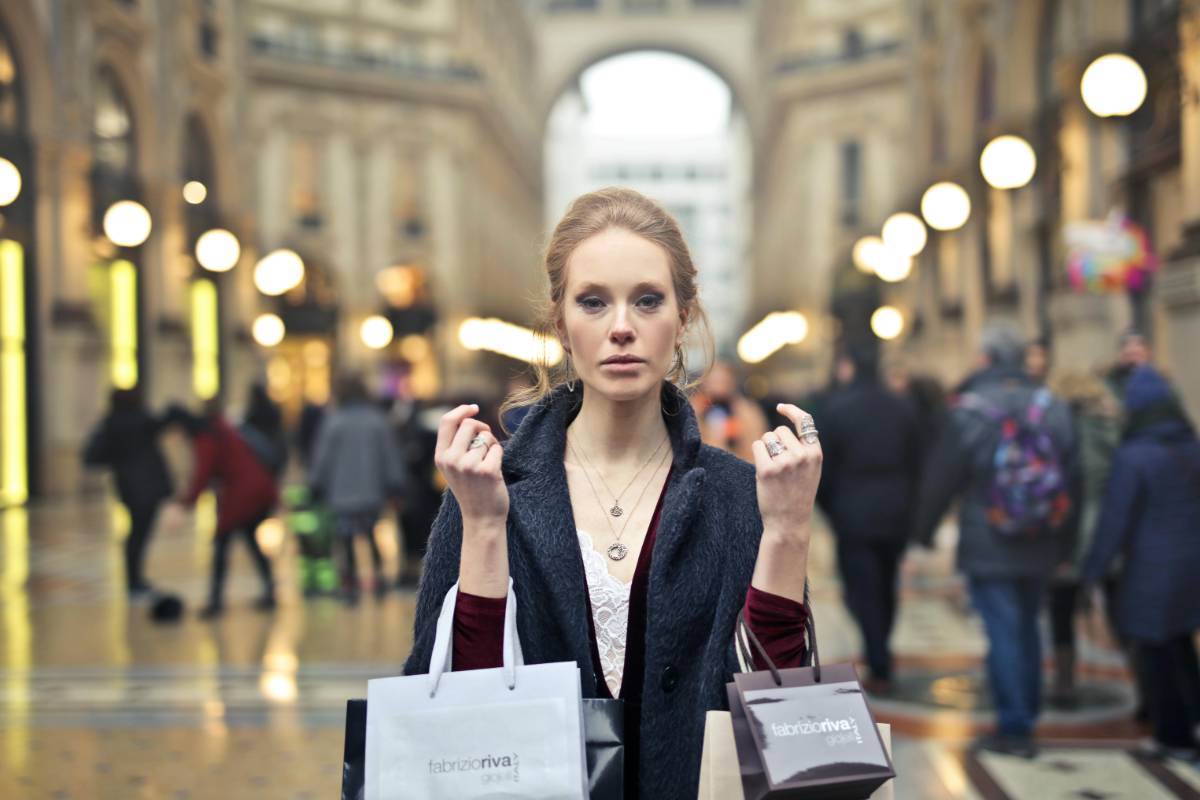
Boutique
Boutique Shopping in Paris, Milan, and Tokyo: A Global Tour
When it comes to luxury shopping, few cities compare to Paris, Milan, and Tokyo. Each offers a distinct flavor of fashion, culture, and retail indulgence. These cities are not only style capitals but also home to some of the world’s most iconic and innovative boutiques.***1. Paris: The Timeless Fashion CapitalParis exudes sophistication at every turn. From the haute couture maisons along Avenue Montaigne to the independent concept stores in Le Marais, boutique shopping in Paris is a lesson in elegance. Stop by the original Chanel store on Rue Cambon or browse the avant-garde selections at L’Eclaireur.***2. Heritage Meets ModernityParisian boutiques beautifully balance tradition and trend. At Maison Margiela’s gallery-like boutique, deconstruction meets art. At Celine’s flagship, minimalist design complements tailored fashion. For vintage lovers, Didier Ludot in Palais Royal is a shrine to past eras of Parisian glamour.***3. Milan: Where Design Reigns SupremeMilan is more than Italy’s fashion hub—it’s a showcase for impeccable design. Via Monte Napoleone is lined with boutiques from Prada, Versace, and Dolce & Gabbana. Step inside and you’ll discover marble floors, plush seating, and interiors that rival any museum.***4. Artful Shopping ExperiencesBoutiques in Milan are architectural wonders. At 10 Corso Como, shopping meets gallery culture, with curated fashion, books, and photography under one roof. Armani/Silos blends clothing with cultural history, and even Gucci’s flagship incorporates art installations.***5. Tokyo: Innovation in Every DetailTokyo’s boutique scene is futuristic, fearless, and full of personality. From Omotesando’s fashion avenue to the labyrinthine alleys of Harajuku, every corner holds discovery. Comme des Garçons’ flagship is a visual spectacle, while Dover Street Market Ginza redefines retail layout entirely.***6. The Craft of Japanese LuxuryJapanese boutiques emphasize precision and detail. Whether it’s Issey Miyake’s tech-driven designs or Visvim’s artisanal craftsmanship, Tokyo boutiques prioritize storytelling. Even the smallest streetwear boutiques feel like carefully designed experiences.***7. Personalized Service Across ContinentsWhether you’re in a Parisian salon, a Milanese atelier, or a Tokyo streetwear haven, one thing remains consistent: exceptional service. Staff are fluent in fashion and attentive to individual taste, ensuring every client feels understood and celebrated.***8. Local Flavor in Global FashionWhile global brands dominate, each city infuses its boutiques with local identity. Paris offers romantic minimalism, Milan boasts bold elegance, and Tokyo thrives on daring experimentation. Each shopping experience becomes a reflection of the city’s soul.***9. Hidden Gems Worth the HuntBeyond the big names, the real treasures are in the hidden boutiques. In Paris, step into Astier de Villatte for handcrafted homeware. In Milan, find Valextra’s leather haven. In Tokyo, explore neighborhood boutiques like Kapital or Beams Plus for an authentic feel.***10. A Journey of Style and CultureBoutique shopping in these cities isn’t just a retail activity—it’s cultural immersion. Fashion here is entwined with art, history, and daily life. It’s about discovering the narrative behind the label, the craftsmanship behind the product, and the atmosphere behind the façade.***ConclusionParis, Milan, and Tokyo offer more than beautiful clothes—they offer unforgettable experiences. Boutique shopping in these cities is about taste, tradition, and innovation. For the global style seeker, there’s no greater journey than exploring the world one boutique at a time.
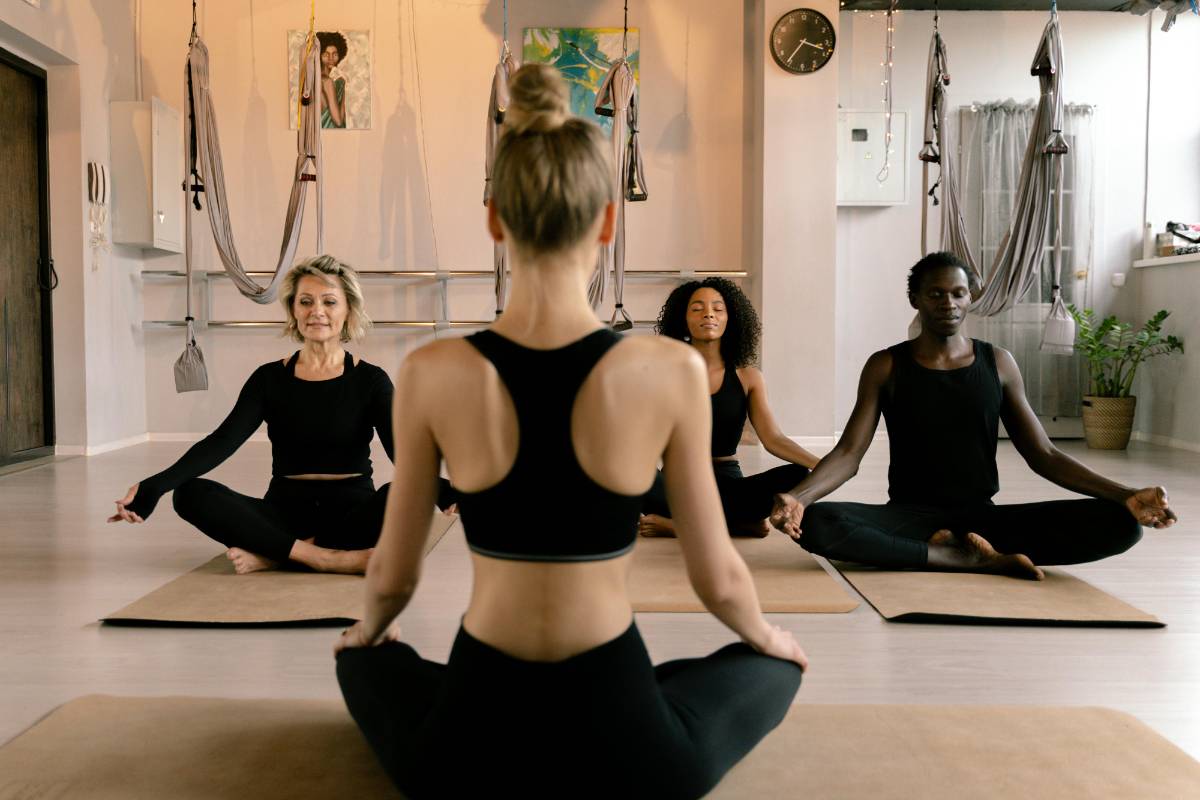
Wellness
Designer Yoga: Where Couture Meets Inner Calm
Yoga has long been associated with simplicity and serenity, but a new wave is elevating the practice with high fashion and curated environments. Welcome to the world of Designer Yoga — where couture meets inner calm, and wellness takes on a luxurious, stylish form.***1. The Evolution of a Timeless PracticeYoga has transcended its ancient roots to become a global lifestyle movement. But now, luxury fashion houses and wellness brands are merging the spiritual with the sartorial. The focus isn’t just on perfecting your downward dog — it’s on how your mat, outfit, and surroundings align with your personal aesthetic.***2. Couture on the MatFrom Lululemon x Roksanda collections to Alo Yoga’s limited-edition silk sets, yoga wear has undergone a transformation. Think cashmere-blend leggings, sculpted bras, and monogrammed wraps. Brands like Dior, Stella McCartney, and Tory Sport have introduced yoga capsules that blend comfort with high-end fashion.***3. Designer Yoga StudiosStep into studios that feel more like art galleries. Picture minimalist interiors with Italian marble floors, Japanese hinoki wood walls, and custom ambient lighting. Luxury wellness spaces in cities like Paris, LA, and Dubai offer curated soundscapes, bespoke scent diffusions, and state-of-the-art ventilation.***4. Meditation Meets MinimalismDesigner yoga emphasizes calm through design. Meditation corners are lined with linen drapes, matte ceramic bowls, and handcrafted zafus. These thoughtfully styled environments enhance the experience, merging form with function to ground the senses.***5. Elevated AccessoriesEven props have received a makeover. From vegan leather yoga mats by B MAT to marble-finish water bottles and Swarovski-embellished eye pillows — every element is selected for both utility and beauty. The result is a ritual that feels indulgent yet deeply intentional.***6. Wellness Retreats in StyleDesigner yoga is not limited to studios. High-end retreats in Tuscany, the Maldives, and the Swiss Alps now offer yoga under the stars, private sound bath sessions, and one-on-one posture correction led by celebrity instructors. It's a fully immersive luxury experience.***7. The Role of Influencers and CelebritiesStyle icons and wellness influencers have played a huge role in making designer yoga aspirational. From Gigi Hadid in The Upside to Gwyneth Paltrow’s Goop retreats, social media is flooded with serene poses in scenic spots — all impeccably styled.***8. More Than Just LooksDesigner yoga is not just about appearances. These elevated spaces and fashion-forward outfits foster a deeper commitment to the practice. When the surroundings and garments make you feel powerful and serene, the connection to your breath and body deepens.***9. Accessibility vs ExclusivityWhile some argue that this movement commercializes yoga, others see it as a natural evolution — a way to bring beauty and design into all aspects of life. Designer yoga encourages mindfulness with a modern twist, and for many, that fusion enhances dedication.***10. The Future of Fashion WellnessThe fusion of luxury fashion and wellness is just beginning. Expect to see tech-integrated yoga wear, AI posture tracking, and subscription boxes with limited-edition designer props. As personal wellness becomes part of one’s brand, couture yoga is evolving as both a trend and a lifestyle.***ConclusionDesigner yoga isn’t about ego — it’s about harmony. Harmony between fashion and function, serenity and self-expression. It’s a movement that celebrates beauty, presence, and the idea that your sanctuary can be as stylish as it is soulful.
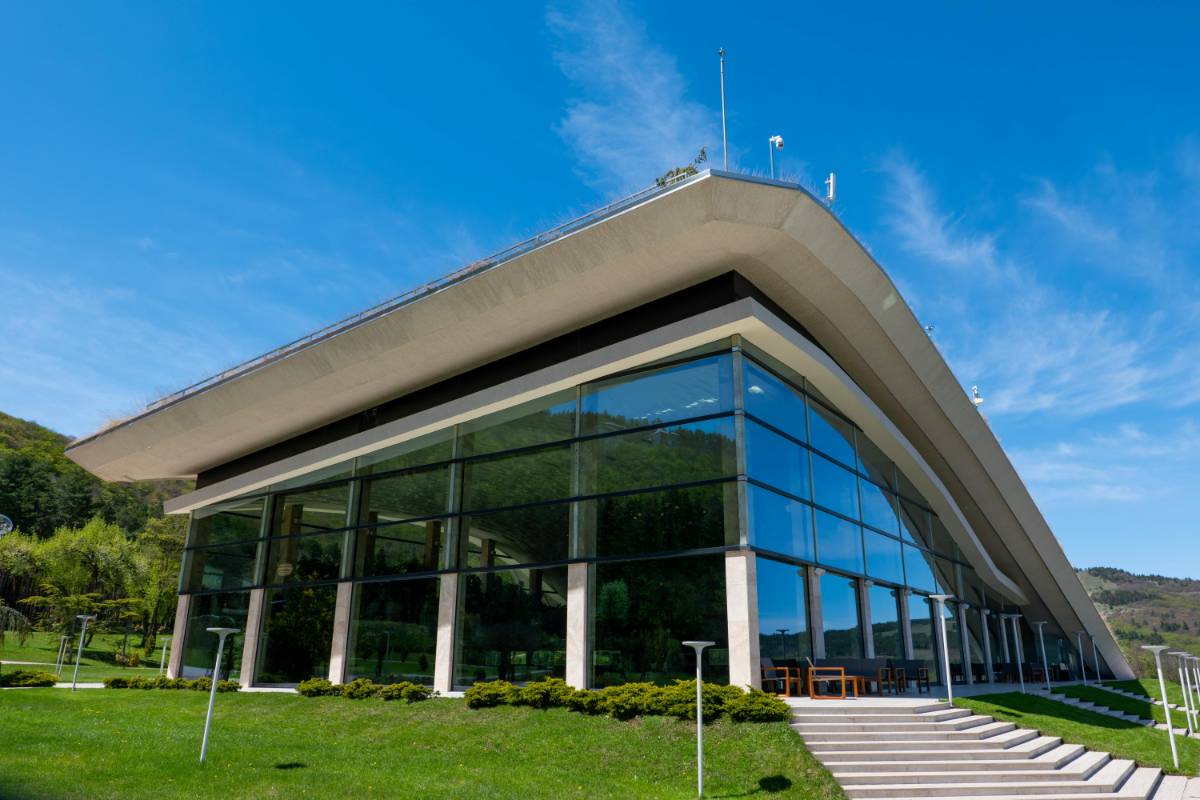
Wellness
Healing Through Travel: The Rise of Wellness Resorts in Bali, Iceland & Costa Rica
Travel is no longer just about sightseeing—it’s about soul-seeking. A new wave of luxury travelers is pursuing healing through immersive experiences, and wellness resorts are answering the call. Destinations like Bali, Iceland, and Costa Rica are emerging as havens for restorative retreats where nature, mindfulness, and wellness merge to create transformational journeys.***1. Bali: The Spiritual Heart of WellnessBali’s lush landscapes and spiritual roots make it a magnet for wellness seekers. Resorts like COMO Shambhala Estate and Fivelements Retreat offer holistic experiences that blend yoga, Balinese healing, plant-based cuisine, and riverfront meditations. Surrounded by jungle and temples, guests are invited to reconnect with their inner self through ancient rituals and nature immersion.***2. Iceland: Healing Through ElementsIceland offers a unique brand of wellness rooted in elemental therapy. From the mineral-rich Blue Lagoon to geothermal spas like Sky Lagoon, the country’s volcanic terrain becomes a natural healer. Luxury wellness lodges incorporate glacier hikes, Northern Lights meditation, and thermal soaking to detoxify and rejuvenate in the most otherworldly settings.***3. Costa Rica: The Eco-Wellness DestinationCosta Rica blends eco-conscious living with high-end relaxation. Resorts like The Retreat Costa Rica and Hacienda AltaGracia provide wellness programs steeped in sustainability. Guests enjoy organic meals, jungle yoga, river cleansing ceremonies, and sound healing—all against the backdrop of cloud forests and coastal vistas.***4. The Power of Nature in Wellness TravelNature plays a central role in the healing process. From rainforest bathing in Bali to floating in Icelandic lagoons, these experiences activate the parasympathetic nervous system, lowering stress and enhancing clarity. Wellness resorts are built into the landscape, allowing the earth itself to become the healer.***5. Personalized Healing JourneysLuxury wellness resorts offer individualized programs that address physical, emotional, and spiritual well-being. Through consultations with wellness experts, guests receive tailored therapies—whether it's anti-inflammatory diets, breathwork, guided visualizations, or sleep optimization. These journeys aim for deep, lasting transformation.***6. Cultural Integration and AuthenticityHealing travel is enriched by local traditions. Balinese ceremonies, Icelandic folklore, and Costa Rican herbalism are respectfully woven into resort offerings. Authenticity is key—luxury today means engaging with local wisdom, not escaping it. Guests don’t just visit; they participate and connect.***7. The Role of Digital DetoxIn an age of constant connectivity, true rest requires disconnection. Wellness resorts emphasize digital detox, encouraging guests to unplug from screens and reconnect with their surroundings. Whether it’s silent mornings, no-WiFi zones, or journaling rituals, the absence of technology becomes a luxury in itself.***8. Wellness Architecture and DesignFrom open-air villas to bio-architectural principles, design enhances the healing atmosphere. Resorts focus on natural materials, flowing layouts, and sacred geometry to foster serenity. Indoor-outdoor transitions, jungle-facing decks, and calming color palettes support the body's natural rhythms.***9. Group Healing and CommunityRetreats offer shared rituals, group meditations, and healing circles. These communal moments foster connection, vulnerability, and shared intention—important elements in the healing process. Many travelers return not just for the treatments, but for the community they discover along the way.***10. Redefining Luxury in TravelLuxury is no longer about opulence—it’s about intention. The new luxury traveler seeks meaning, growth, and peace. Wellness resorts offer this through curated experiences, sustainability, and soulful attention to detail. It’s not about indulgence for its own sake, but healing that feels indulgent by design.***ConclusionThe rise of wellness resorts in Bali, Iceland, and Costa Rica marks a shift in global travel. Healing is now a destination, not just a mindset. As travelers seek deeper purpose, these sanctuaries offer the space, practices, and natural beauty to restore body, mind, and spirit—proving that the most meaningful journeys often begin within.
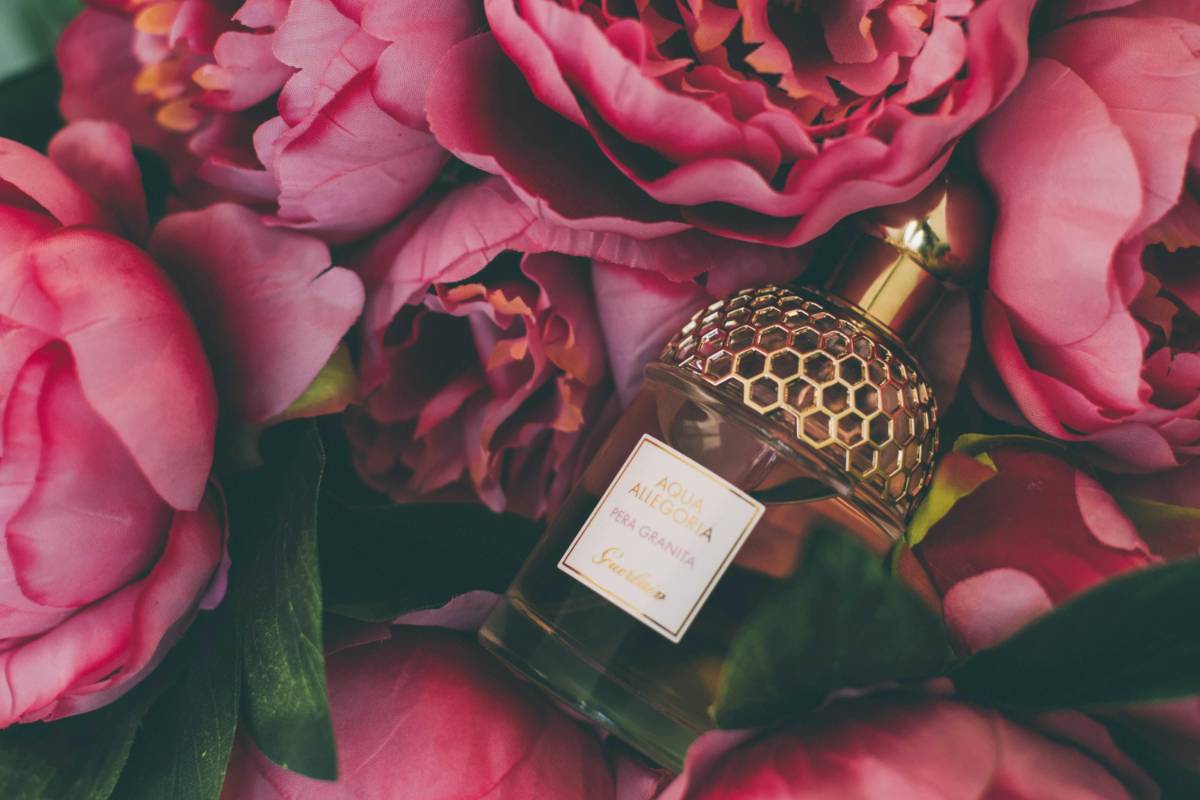
Fragrance
Scent Memory: Why Luxury Perfumes Tap into Deep Emotions
A single whiff of a luxury perfume can unlock memories buried deep in our minds. This powerful connection between scent and emotion is why fragrances hold such an intimate place in our lives.***1. The Science Behind Scent MemoryUnlike other senses, smell is directly linked to the brain’s limbic system, responsible for memory and emotion. This is why certain perfumes can evoke vivid recollections almost instantly.***2. Fragrance as Emotional Time TravelLuxury scents often bring us back to moments of love, loss, joy, or transformation. A childhood memory of jasmine-filled summers or the warmth of a leather armchair can be captured in a bottle.***3. The Role of IngredientsHigh-end perfumes use rare and potent ingredients—ambergris, oud, Bulgarian rose—which linger longer and leave more lasting emotional impressions compared to synthetic alternatives.***4. Signature Scents and IdentityPeople often choose one fragrance that becomes their “signature” not just for how it smells, but how it makes them feel—a confident meeting, a romantic encounter, or an unforgettable trip.***5. Personal Rituals and Daily AnchorsApplying perfume becomes more than routine—it’s a grounding moment. A spritz before a big meeting or night out can boost confidence and set the tone emotionally.***6. Cultural and Family ConnectionMany scents carry generational or cultural resonance. A grandmother’s powdery floral perfume or traditional attars passed through families can trigger a sense of belonging.***7. Niche Perfumery and StorytellingLuxury niche brands craft scents as narratives. A perfume might tell the story of a Moroccan spice market or a rainy Parisian afternoon, engaging the wearer emotionally and imaginatively.***8. Creating New Memories with FragranceChoosing a new perfume for a specific life chapter—weddings, new jobs, travels—helps attach a scent to those moments. Later, a revisit to that scent becomes a doorway to nostalgia.***ConclusionLuxury perfumes are more than elegant aromas—they are emotional companions. Through scent memory, they embed themselves into the fabric of our lives, making the invisible deeply unforgettable.
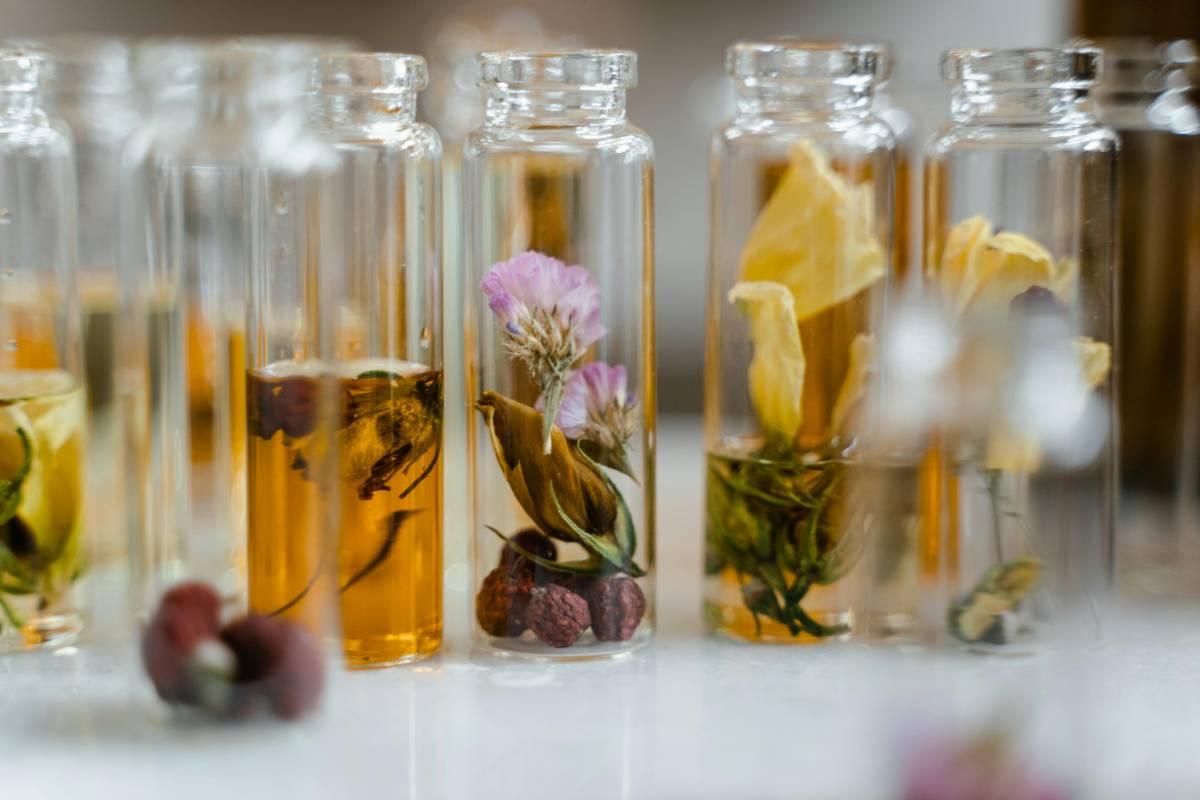
Fragrance
How to Layer Fragrances Like a Perfume Connoisseur
Fragrance layering, once a secret of industry insiders, is now a cherished ritual for those seeking a personalized olfactory signature. It’s the art of combining multiple scents to create something uniquely yours.***1. Understand the Basics of LayeringStart with lighter scents and build up to heavier ones. Think of fragrance like music—top notes are your introduction, heart notes are the melody, and base notes are the rich finale.***2. Know Your NotesChoose perfumes with complementary notes. Vanilla pairs well with woods, citrus brightens florals, and musk enhances spice. Avoid overpowering combinations by sticking to two or three fragrances.***3. Choose a Base FragranceSelect a foundational scent—usually something warm or neutral like musk, amber, or sandalwood. This anchors the composition and blends well with most other perfumes.***4. Add a Contrasting or Enhancing LayerYour second fragrance should add dimension. A bright citrus can lift a smoky base, or a floral note can soften a spicy composition. Think in terms of contrast and balance.***5. Application Order MattersSpray the heavier scent first, followed by the lighter one. Apply one to your pulse points and the other to your clothes or hair for diffusion and longevity.***6. Experiment on Skin, Not StripsFragrance layering is a personal experience—your skin chemistry will affect how scents evolve. Always test combinations on your skin before wearing them out.***7. Less Is MoreLayering doesn’t mean dousing yourself in multiple perfumes. Start with one spray of each to avoid overwhelming the senses. Adjust intensity as you learn what works.***8. Try Pre-Curated Layering SetsSome niche brands offer layering duos or trios that are designed to work together. It’s a great way to explore without the guesswork.***9. Make It a Daily RitualFragrance layering isn’t just about scent—it’s a form of self-care and creative expression. Make it part of your morning ritual to match your mood and style.***10. Keep a Scent JournalDocument your favorite combinations, what notes stood out, and how long they lasted. Over time, you’ll refine your personal signature and understand your olfactory preferences better.***ConclusionMastering the art of fragrance layering turns everyday perfumery into an experience of luxury and identity. With intention and creativity, you can craft a scent that’s as nuanced and unforgettable as you are.
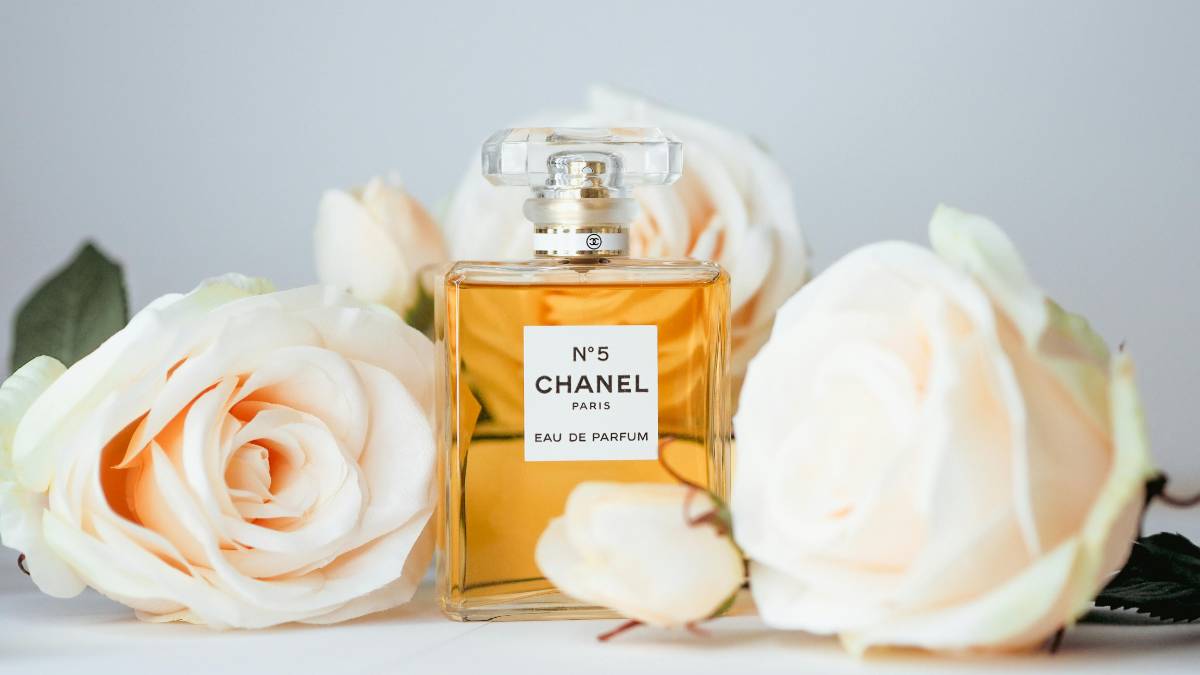
Fragrance
Behind the Bottle: The Craft of Niche Luxury Fragrances
In the world of perfumery, niche luxury fragrances are the secret indulgence of those who value individuality over mainstream appeal. These artisan scents go beyond commercial trends, focusing instead on craftsmanship, authenticity, and emotional connection. But what exactly goes into the making of a niche fragrance? We take you behind the bottle.***1. What Defines Niche FragranceNiche fragrances are created by independent perfumers or boutique houses. Unlike mass-market perfumes, they aren’t built to please everyone. Instead, they explore complex scent profiles, rare ingredients, and unconventional inspirations. Brands like Byredo, Le Labo, and Diptyque exemplify this ethos—artful, curated, and bold.***2. A Story in Every ScentEach niche fragrance starts with a narrative. Whether it’s the memory of a childhood garden, a remote coastline, or the scent of old libraries, the perfume becomes a story you wear. Perfumers translate emotions into olfactory notes, turning each bottle into a sensory journal.***3. The Artisan TouchMost niche brands use small-batch production to preserve quality and freshness. This allows for hand-blending, longer maceration periods, and less reliance on synthetic fillers. It’s not uncommon for one nose—the master perfumer—to oversee every step, ensuring a deeply personal and artisanal result.***4. Ingredient IntegrityFrom Somali frankincense to Bulgarian rose and Tahitian vanilla, niche houses source rare, ethically harvested ingredients. These natural components aren’t just luxurious—they’re unpredictable and alive, making each batch slightly unique. This variability is celebrated, not corrected.***5. Packaging as ArtBehind every bottle is a visual identity. Niche fragrance brands often collaborate with artists, sculptors, or ceramicists to create bespoke bottles and minimalist labels. Frédéric Malle’s literary-inspired packaging and BDK Parfums’ Parisian glasswork are perfect examples of design meeting scent.***6. Distribution with DiscretionYou won’t find most niche perfumes in department stores. They’re sold in select boutiques, concept stores, or online with curated guidance. This limited availability adds an air of exclusivity—owning a niche scent is like discovering a secret that few others know.***7. Gender Fluidity in ScentMany niche brands abandon traditional gender labels. Instead of “for him” or “for her,” they focus on emotion, season, or mood. Maison Francis Kurkdjian’s Baccarat Rouge 540 and Escentric Molecules’ Molecule 01 are beloved for their ability to transcend gender entirely.***8. The Rise of the Independent NoseCelebrity perfumers are now rockstars in the fragrance world. Names like Geza Schoen, Lyn Harris, and Christophe Laudamiel have built cult followings for their innovative and expressive work. These perfumers often break rules—creating fragrances with only a few notes or playing with molecular chemistry.***9. Slow Perfumery MovementJust like slow fashion, slow perfumery values quality over quantity. It emphasizes mindful sourcing, minimal waste, and transparent production. Brands like Haeckels and Sana Jardin lead the way, proving that sustainability and luxury can coexist beautifully.***10. Emotional Resonance Over Mass AppealWearing a niche fragrance is a form of self-expression. It doesn’t aim to be popular—it aims to be personal. These perfumes often evoke nostalgia, provoke curiosity, or stir emotion. And in that way, they become more than fragrance—they become part of your identity.***ConclusionNiche luxury fragrances are crafted with soul. They’re not just about smelling good—they’re about feeling something. Behind every bottle is a perfumer’s vision, rare ingredients, and a story waiting to unfold on your skin. For those who seek depth over dazzle, niche scents are the true olfactory masterpieces.
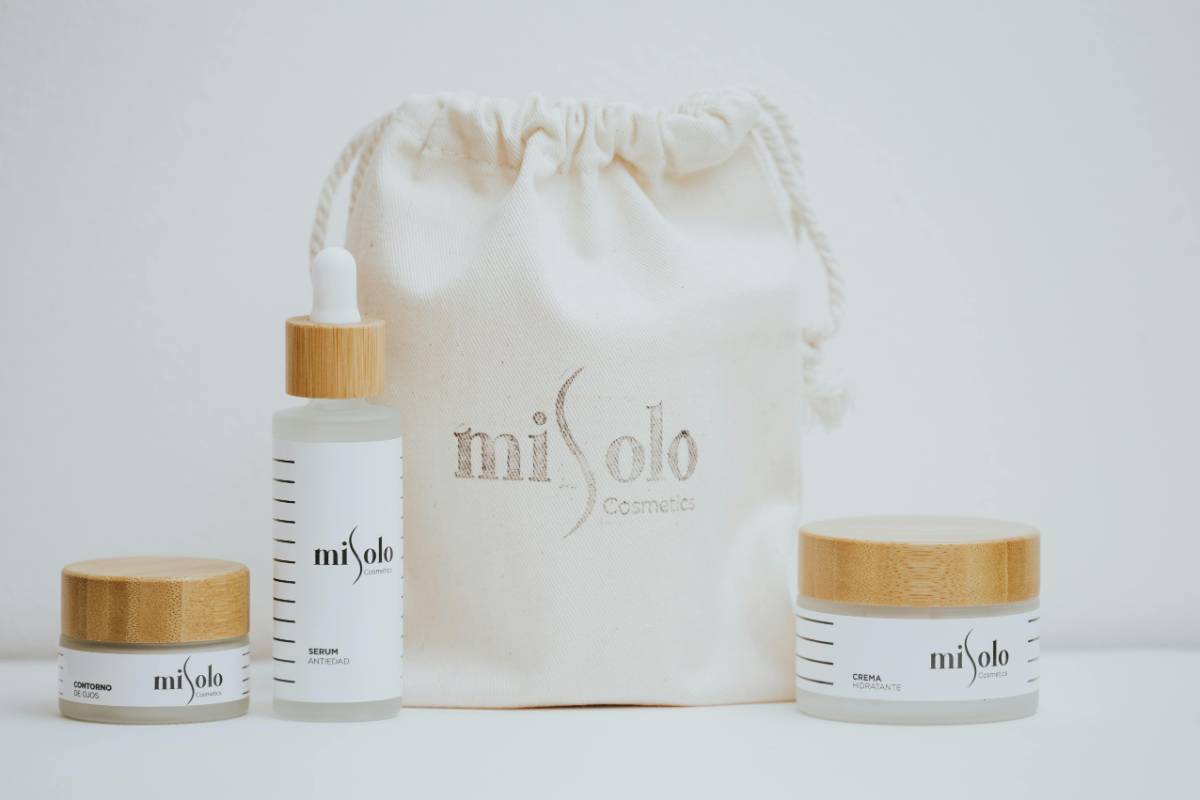
Luxury Skincare
Organic Meets Opulence: Sustainable Luxury Skincare Brands to Watch
Sustainability and luxury may once have seemed worlds apart, but today’s discerning consumers are demanding both — and high-end skincare brands are rising to the challenge. The fusion of organic purity and opulent indulgence is creating a new wave of skincare labels that deliver both ethical integrity and transformative results.***1. The Rise of Eco-LuxuryAs climate consciousness grows, luxury skincare is shifting from excess to ethics. Consumers are turning toward brands that prioritize clean ingredients, eco-friendly packaging, and cruelty-free practices. The modern definition of luxury now includes traceability, transparency, and responsibility.***2. Ingredients with IntegrityToday’s sustainable skincare is driven by potent botanicals, bioactive extracts, and renewable resources. Brands like Tata Harper use farm-fresh ingredients, grown on-site, to ensure purity. Others, like Herbivore Botanicals, harness sustainably sourced minerals and cold-pressed oils that deliver visible results without compromising on ethics.***3. Green Packaging InnovationGlass jars, compostable boxes, and refillable systems are redefining packaging aesthetics. Brands like L’Occitane and REN Clean Skincare have adopted zero-waste goals, while new players are using biodegradable algae ink and mushroom-based wrapping. It’s not just about what's inside the bottle anymore.***4. Performance Without CompromiseLuxury skincare once implied synthetic ingredients and elaborate formulas. Now, high-performance organic skincare offers results comparable to clinical brands. Brands like Vintner’s Daughter and May Lindstrom combine active botanicals with nutrient-dense oils, delivering firming, brightening, and hydrating benefits.***5. Conscious Luxury LeadersSeveral brands are spearheading the sustainable revolution in premium skincare. Aesop integrates eco-conscious sourcing with minimalistic design. Susanne Kaufmann blends Alpine traditions with modern green science. Each of these brands champions both planet and performance.***6. The Role of TechnologyGreen tech is enhancing sustainability in skincare. CO2 extraction, bio-fermentation, and waterless formulations are minimizing waste and maximizing potency. Brands like True Botanicals are using biotech to replicate rare actives without harming ecosystems.***7. Certifications That MatterModern consumers look for labels that signal trust—COSMOS Organic, Ecocert, Leaping Bunny, and Climate Neutral Certified. These aren’t just badges; they’re proof of rigorous standards, showing that a brand walks its talk.***8. Local and Small-Batch ProductionMany emerging luxury labels are scaling down production to scale up quality. Small-batch runs reduce waste and ensure freshness. Brands like Earthwise Beauty and Monastery utilize artisanal methods, offering a deeply personal skincare experience.***9. Transparency as a LuxuryOpenness about sourcing, labor practices, and environmental impact is the new badge of luxury. Brands now share the lifecycle of a product—from seed to shelf—building trust and connection with a mindful customer base.***10. Celebrity and Influencer EndorsementsStars like Emma Watson and Gwyneth Paltrow have championed organic luxury, launching or endorsing brands that blend clean beauty with elegance. These figures help redefine what aspirational skincare looks like in a post-carbon-conscious world.***11. The Future of Sustainable SkincareExpect more hybrid formulas, AI-assisted customization, and carbon-negative production. The future belongs to brands that balance efficacy with environmental mindfulness. Sustainability is no longer a trend—it’s the foundation of tomorrow’s luxury.***ConclusionSustainable luxury skincare is not just a niche—it’s the new norm. With a growing roster of brands committed to both planet and performance, the industry is evolving into a space where purity meets prestige. As consumers, choosing these conscious brands means indulging in beauty that’s both skin-deep and planet-deep.
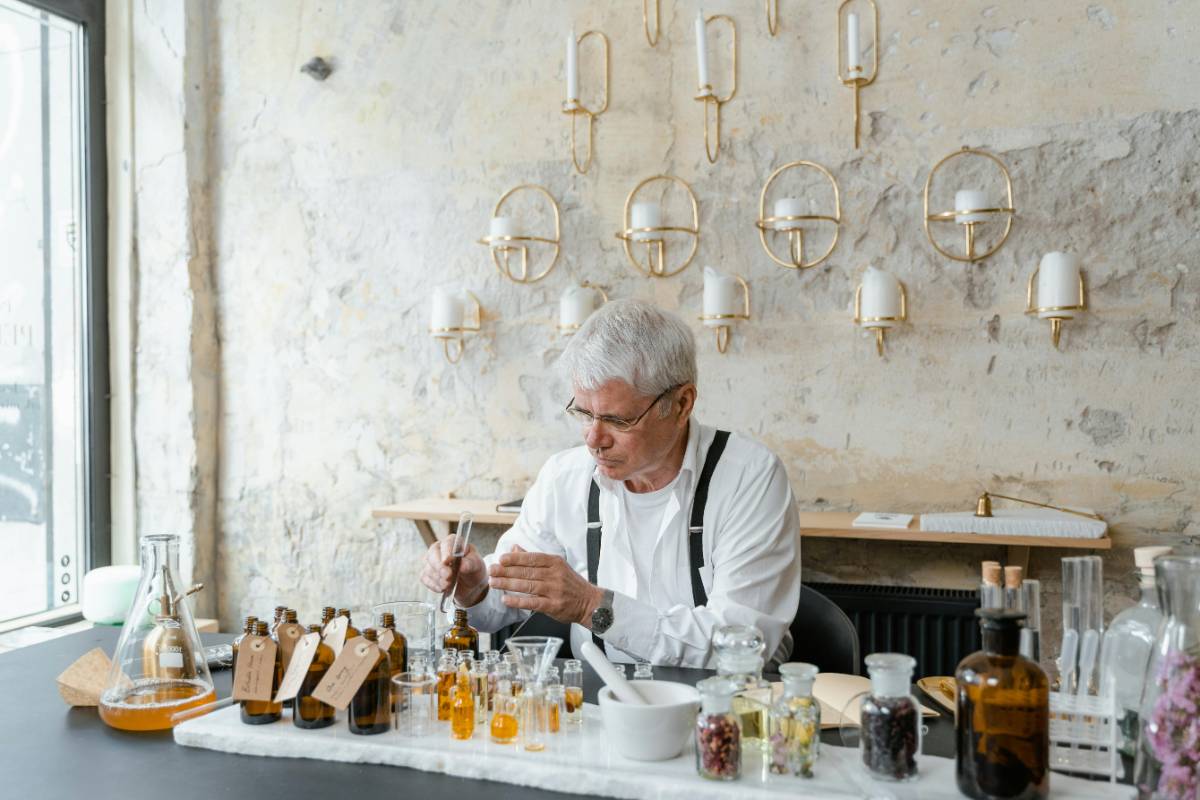
Luxury Skincare
Why Dermatologists Recommend Medical-Grade Luxury Products
In a world where skincare aisles are flooded with enticing options, medical-grade luxury products are gaining prominence for a reason. Unlike over-the-counter formulations, these dermatologist-recommended solutions blend clinical strength with luxury refinement.***1. What Are Medical-Grade Skincare Products?Medical-grade skincare refers to products that are formulated with higher concentrations of active ingredients and are often backed by clinical research. These are typically sold through licensed professionals like dermatologists or medical spas.They are designed not just for cosmetic appeal but for genuine skin correction and maintenance.***2. The Science Behind the LuxuryMedical-grade doesn’t mean cold and clinical. Many luxury skincare brands have embraced medical efficacy, blending it with rich textures, elegant packaging, and spa-like experiences.Brands like SkinCeuticals, Obagi, and iS Clinical bring in pharmaceutical-grade technology while offering a luxurious application process.***3. Why Dermatologists Recommend ThemDermatologists favor these products for their tested results and ability to target specific concerns like hyperpigmentation, acne, and aging. With years of clinical trials and FDA oversight behind them, they deliver visible outcomes faster and safer.Moreover, they have better delivery systems to ensure ingredients like retinol and peptides penetrate deeper layers of skin.***4. Key Ingredients to Look Out ForIngredients like L-ascorbic acid (a potent form of Vitamin C), prescription-strength retinoids, hydroquinone, and growth factors are commonly found in medical-grade products.These ingredients are often too strong or unstable for regular OTC products.***5. Tailored to Skin Types and ConditionsA major reason dermatologists love these products is the customization they allow. Whether you're struggling with rosacea or deep wrinkles, a targeted product line exists.They’re not one-size-fits-all – they’re personalized to your exact skin needs.***6. Safety and SupervisionBecause they’re dispensed through professionals, your skincare routine comes with guidance. Dermatologists can help you avoid harmful combinations and ensure you’re applying products correctly.This adds an extra layer of safety and precision.***7. The Luxury EdgeThese products often come with lush formulations – think silky serums, hydrating creams, and velvety cleansers. They offer the satisfaction of luxury while working like prescription-level treatments.***8. Investment vs. CostYes, they may cost more upfront. But because they work efficiently, users often see faster and longer-lasting results, reducing the need for constant repurchasing or unnecessary treatments.As dermatologists argue: "Why spend on multiple ineffective products when one clinical-grade solution can solve the issue?"***9. Brands Trusted by ExpertsSome of the most trusted medical-luxury brands include Alastin, ZO Skin Health, SkinBetter Science, and Epionce. These are brands you'll often find behind the scenes of glowing celebrity skin.***10. Should You Make the Switch?If you have persistent skin concerns or want real results without cosmetic procedures, a medical-grade luxury routine might be worth exploring. Consulting a board-certified dermatologist is the best first step.***ConclusionMedical-grade luxury skincare is not just a trend—it's the merging of science and indulgence. Dermatologists back them for their transformative abilities and targeted precision. For those seeking skin solutions that go beyond surface-level beauty, these products offer a potent path to visible results.
